
151+ Computer Presentation Topics [Updated 2024]
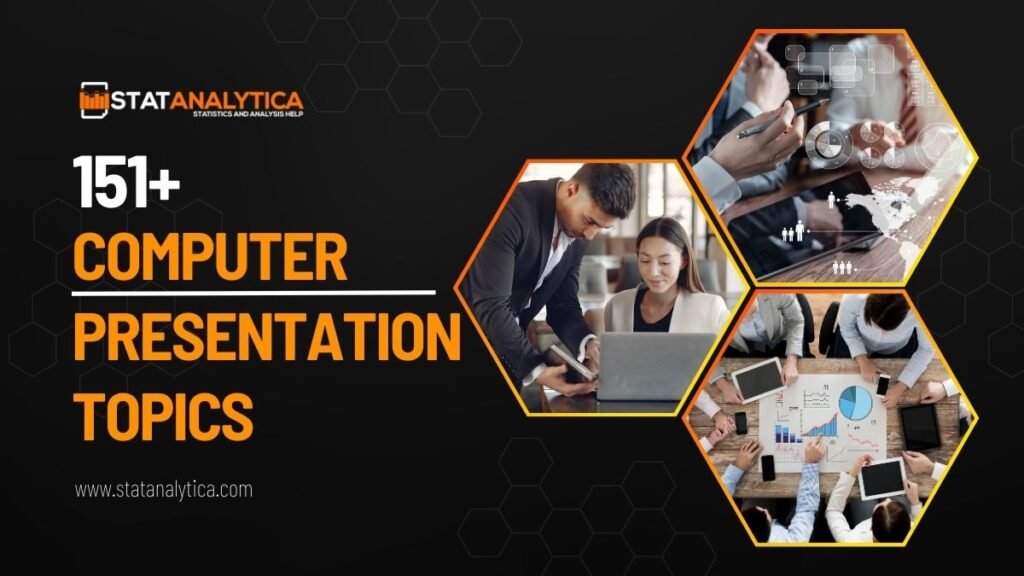
For both professionals and fans, keeping up with the most recent developments and trends in the rapidly evolving field of technology is essential. One effective way to share and acquire knowledge is through computer presentations.
Whether you are a seasoned presenter or someone looking to enhance your tech presentation skills, choosing the right topics is key to delivering a compelling and informative session.
In this blog, we’ll explore various computer presentation topics, their relevance, and provide insights into tailoring presentations for different audiences and occasions.
How do you Tailor Topics According to Audience and Occasion?
Table of Contents
Tailoring topics according to the audience and occasion is a crucial aspect of delivering an effective and engaging presentation. Here are some strategies and considerations to help you customize your computer presentation topics based on your audience and the specific occasion:
- Know Your Audience
- Assess Knowledge Levels: Understand the expertise of your audience. Are they beginners, intermediate users, or experts in the field? This assessment will guide you in selecting the appropriate depth and complexity of your topics.
- Consider Backgrounds: Take into account the professional backgrounds, interests, and industries of your audience. Tailor your examples and case studies to resonate with their experiences.
- Identify Audience Needs and Goals:
- Address Pain Points: If possible, research or survey your audience to identify their challenges and pain points. Tailor your presentation to address these concerns, providing practical solutions and insights.
- Align with Goals: Understand the goals and objectives of your audience. Tailor your topics to align with their aspirations, whether it’s professional development, problem-solving, or staying updated on industry trends.
- Adapt to the Occasion:
- Event Type: Consider the type of event you are presenting at. Is it a conference, workshop, seminar, or a more informal gathering? The format and expectations of the event will influence your choice of topics.
- Time Constraints: Be mindful of the time allotted for your presentation. Tailor the scope and depth of your topics to fit within the designated time frame.
- Customize Content:
- Relevance to Industry: If your audience belongs to a specific industry, tailor your topics to address challenges and innovations relevant to that industry. Provide concrete examples and case studies that resonate with their professional experiences.
- Localize Examples: Consider the cultural context and geographic location of your audience. If possible, use examples and references that are familiar to them, making the content more relatable.
- Engage in Interactivity:
- Q&A Sessions: Plan for interactive sessions, allowing the audience to ask questions. This helps you gauge their interests and tailor your responses to address specific concerns.
- Polls and Surveys: Incorporate interactive elements such as polls or surveys to gather real-time feedback. Use the results to adjust your presentation on the fly if necessary.
- Provide Actionable Takeaways:
- Practical Applications: Tailor your topics to include practical applications and actionable takeaways. Ensure that your audience can apply the knowledge gained from your presentation in their professional or personal endeavors.
- Workshops and Demos: For hands-on sessions, tailor your topics to include workshops or live demonstrations. This enhances the learning experience and allows the audience to see practical implementations.
- Be Adaptable:
- Read the Room: Pay attention to the audience’s reactions during the presentation. Be adaptable and ready to adjust your approach based on their engagement levels and feedback.
- Flexibility in Content: Have backup content or supplementary materials that can be introduced based on audience interest or questions.
Software Development and Programming
- Trends in Programming Languages : A Comprehensive Overview
- Introduction to Python: Basics and Beyond
- Exploring the World of JavaScript Frameworks
- Best Practices in Software Development Methodologies
- The Evolution of Mobile App Development
- Low-Code Platforms: Revolutionizing Software Development
- The Impact of Microservices Architecture on Modern Applications
- DevOps Practices: Streamlining Development and Operations
- Code Review Techniques for Quality Assurance
- GUI vs. Command Line Interfaces: Pros and Cons
Emerging Technologies
- Artificial Intelligence (AI): An Introduction and Applications
- Machine Learning Algorithms: A Deep Dive
- The Role of Natural Language Processing (NLP) in AI
- Computer Vision: Applications and Challenges
- Internet of Things (IoT) and its Transformative Power
- Blockchain Technology: Beyond Cryptocurrencies
- Augmented Reality (AR) and Virtual Reality (VR) in Computing
- Edge Computing: Enhancing Network Performance
- Quantum Computing: A Glimpse into the Future
- 6G Technology: Enabling the Next Generation of Connectivity
Cybersecurity
- Cyber Threats: Types, Trends, and Prevention Strategies
- Ethical Hacking: Unveiling Security Vulnerabilities
- Biometric Security Systems: Enhancing Authentication
- Cryptography: Ensuring Secure Communication
- Security Measures for Computer Networks: A Practical Guide
- Privacy Concerns in the Digital Age: Safeguarding Information
- Incident Response Planning for Cybersecurity
- Cloud Security Best Practices
- Cybersecurity Awareness Training for Employees
- The Future of Cybersecurity: Emerging Challenges
Data Science and Big Data
- Introduction to Data Science: Concepts and Applications
- Data Analysis Techniques: From Descriptive to Predictive Analytics
- Big Data Technologies: Hadoop, Spark, and Beyond
- Data Warehousing: Storing and Retrieving Massive Datasets
- Data Visualization Tools : Making Sense of Complex Data
- Predictive Modeling in Business: Leveraging Data Insights
- Internet of Things (IoT) and Big Data Integration
- Real-Time Analytics: Turning Data into Actionable Insights
- Data Ethics: Navigating the Challenges of Responsible Data Use
- Data-driven Decision Making in Organizations
Computer Hardware and Networking
- Latest Advancements in Computer Hardware
- The Role of Graphics Processing Units (GPUs) in Modern Computing
- Networking Protocols: A Deep Dive into TCP/IP, UDP, and More
- Wireless Technologies: Wi-Fi 6 and Beyond
- Cloud Computing Models : IaaS, PaaS, and SaaS Explained
- Edge Computing vs. Cloud Computing: Choosing the Right Approach
- Green Computing: Sustainable Practices in IT
- Quantum Computing and its Potential Impact on Industry
- 5G Technology: Revolutionizing Mobile Communication
- Wearable Technology: Integrating Computing into Everyday Life
Artificial Intelligence (AI) Applications
- AI in Healthcare: Transforming Diagnosis and Treatment
- AI in Finance: Applications and Risk Management
- AI in Customer Service: Enhancing User Experience
- AI in Education: Personalized Learning and Assessment
- AI in Autonomous Vehicles: Navigating the Future
- AI in Agriculture: Precision Farming and Crop Monitoring
- AI in Cybersecurity: Detecting and Preventing Threats
- AI in Natural Language Processing (NLP) : Conversational Interfaces
- AI in Robotics: Innovations and Challenges
- AI in Retail: Personalized Shopping Experiences
Internet and Web Technologies
- Evolution of the Internet: From ARPANET to the Present
- Web Development Trends: Responsive Design and Progressive Web Apps
- Content Management Systems (CMS): Choosing the Right Platform
- E-commerce Platforms: Building Successful Online Stores
- Search Engine Optimization (SEO) Strategies for Web Visibility
- Cloud-based Web Hosting Solutions: Comparisons and Best Practices
- Web Accessibility: Designing Inclusive and User-Friendly Websites
- Social Media Integration: Enhancing Online Presence
- Web Security Best Practices: SSL, HTTPS, and Beyond
- The Future of the Internet: Trends and Predictions
Mobile Technologies
- Mobile Operating Systems: A Comparison of iOS and Android
- Mobile App Monetization Strategies: Ads, Subscriptions, and Freemium Models
- Cross-platform Mobile Development: Pros and Cons
- Mobile Payment Technologies: From NFC to Cryptocurrencies
- Mobile Health (mHealth) Applications: Improving Healthcare Access
- Location-based Services in Mobile Apps: Opportunities and Challenges
- Mobile Gaming Trends: Augmented Reality and Multiplayer Experiences
- The Impact of 5G on Mobile Applications
- Mobile App Testing: Ensuring Quality User Experiences
- Mobile Security: Protecting Devices and User Data
Human-Computer Interaction (HCI)
- User Experience (UX) Design Principles: Creating Intuitive Interfaces
- Usability Testing Methods: Evaluating the User-Friendliness of Products
- Interaction Design Patterns: Enhancing User Engagement
- Accessibility in Design: Designing for All Users
- Virtual Reality (VR) and User Experience: Design Considerations
- Gamification in User Interface Design: Enhancing Engagement
- Voice User Interface (VUI) Design: Building Natural Interactions
- Biometric User Authentication: Balancing Security and Convenience
- The Evolution of Graphical User Interfaces (GUIs)
- Wearable Technology Design: Integrating Fashion and Functionality
Cloud Computing
- Cloud Service Models: IaaS, PaaS, and SaaS Explained
- Cloud Deployment Models: Public, Private, and Hybrid Clouds
- Cloud Security Best Practices: Protecting Data in the Cloud
- Serverless Computing: Streamlining Application Development
- Cloud Computing in Business: Cost Savings and Scalability
- Cloud-Native Technologies: Containers and Orchestration
- Microservices Architecture in the Cloud: Breaking Down Monoliths
- Cloud Computing Trends: Edge Computing and Multi-cloud Strategies
- Cloud Migration Strategies: Moving Applications to the Cloud
- Cloud Computing in Healthcare: Enhancing Patient Care
Robotics and Automation
- Robotics in Manufacturing: Increasing Efficiency and Precision
- Autonomous Robots: Applications and Challenges
- Humanoid Robots: Advancements in AI-driven Robotics
- Robotic Process Automation (RPA): Streamlining Business Processes
- Drones in Industry: Surveillance, Delivery, and Beyond
- Surgical Robotics: Innovations in Medical Procedures
- Robotic Exoskeletons: Assisting Human Mobility
- Social Robots: Interacting with Humans in Various Settings
- Ethical Considerations in Robotics and AI
- The Future of Robotics: Trends and Predictions
Ethical Considerations in Technology
- Responsible AI: Ethical Considerations in Artificial Intelligence
- Data Privacy Laws: Navigating Compliance and Regulations
- Bias in Algorithms: Addressing and Mitigating Unintended Consequences
- Ethical Hacking: Balancing Security Testing and Privacy Concerns
- Technology and Mental Health: Addressing Digital Well-being
- Environmental Impact of Technology: Green Computing Practices
- Open Source Software: Community Collaboration and Ethical Licensing
- Technology Addiction: Understanding and Combating Dependencies
- Social Media Ethics: Privacy, Fake News, and Cyberbullying
- Ethical Considerations in Biometric Technologies
Future Trends in Technology
- The Future of Computing: Quantum Computing and Beyond
- Edge AI: Bringing Intelligence to the Edge of Networks
- Biocomputing: Merging Biology and Computing
- Neurotechnology: Brain-Computer Interfaces and Cognitive Enhancement
- Sustainable Technologies: Innovations in Green Computing
- 7G and Beyond: Envisioning the Next Generation of Connectivity
- Space Technology and Computing: Exploring the Final Frontier
- Biohacking and DIY Tech: A Look into Citizen Science
- Tech for Social Good: Using Technology to Address Global Challenges
- The Convergence of Technologies: AI, IoT, Blockchain, and More
Miscellaneous Topics
- Technology and Education: Transforming Learning Experiences
- Digital Transformation: Strategies for Modernizing Businesses
- Tech Startups: Navigating Challenges and Achieving Success
- Women in Technology: Empowering Diversity and Inclusion
- The History of Computing: Milestones and Innovations
- Tech and Art: Exploring the Intersection of Creativity and Technology
- Hackathons: Fostering Innovation in Tech Communities
- The Role of Technology in Disaster Management
- Exploring Careers in Technology: Opportunities and Challenges
Tips for Effective Computer Presentations
- Mastering the Art of Public Speaking in the Tech Industry
- Designing Engaging Visuals for Technical Presentations
- The Dos and Don’ts of Live Demonstrations in Tech Presentations
- Building a Compelling Narrative: Storytelling Techniques in Tech Talks
- Handling Q&A Sessions: Tips for Addressing Audience Questions
- Time Management in Tech Presentations: Balancing Content and Interaction
- Incorporating Humor in Technical Presentations: Dos and Don’ts
- Creating Interactive Workshops: Engaging Audiences in Hands-on Learning
- Leveraging Social Media for Tech Presentations: Tips for Promotion
- Continuous Learning in the Tech Industry: Strategies for Staying Informed
Case Studies and Real-World Applications
Real-world examples and case studies add practical relevance to computer presentations. Showcase successful projects, discuss challenges faced, and share lessons learned.
Analyzing the impact of technology in real-world scenarios provides valuable insights for the audience and encourages a deeper understanding of the subject matter.
Future Trends in Computer Presentation Topics
Predicting future trends in technology is both exciting and challenging. Presenters can offer insights into upcoming technological developments, anticipate challenges and opportunities, and encourage continuous learning in the rapidly evolving tech landscape.
Discussing the potential impact of technologies like 6G, augmented reality, or advancements in quantum computing sparks curiosity and keeps the audience abreast of the latest innovations.
In conclusion, computer presentations serve as powerful tools for knowledge sharing and skill development in the tech industry. Whether you’re presenting to novices or seasoned professionals, the choice of topics, presentation skills, and a thoughtful approach to ethical considerations can elevate the impact of your presentation.
As technology continues to evolve, staying informed and exploring diverse computer presentation topics will be instrumental in fostering a culture of continuous learning and innovation.
Embrace the dynamic nature of technology and embark on a journey of exploration and enlightenment through engaging computer presentations.
Related Posts

Step by Step Guide on The Best Way to Finance Car
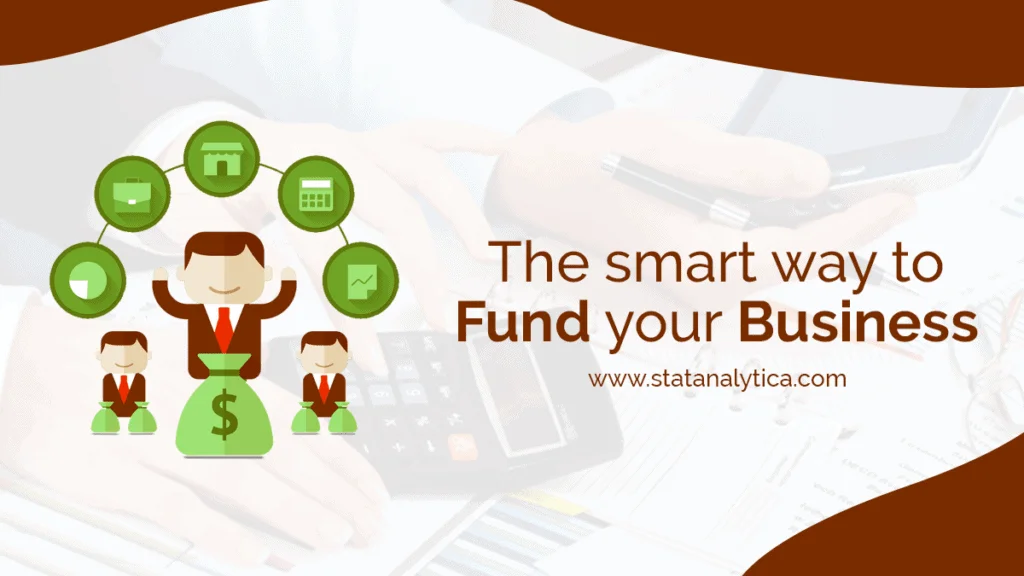
The Best Way on How to Get Fund For Business to Grow it Efficiently
The Ultimate List of Technology Topics for Presentations: 100+ Ideas to Inspire and Engage Your Audience
Explore 100+ engaging technology topics for presentations, from AI to cybersecurity, perfect for students, professionals, and educators.
1. Artificial Intelligence and Machine Learning
- Basics of Artificial Intelligence: Understanding the principles and applications.
- Machine Learning Algorithms Explained: An overview of supervised and unsupervised learning.
- Deep Learning and Neural Networks: How they mimic the human brain.
- AI in Healthcare: From diagnosis to treatment – the role of AI.
- Ethics in AI: Navigating the moral and ethical implications.
- Natural Language Processing: How machines understand and generate language.
- AI in Autonomous Vehicles: The future of self-driving cars.
- AI and Robotics: The integration of AI in robotic systems.
- AI in Education: Personalized learning and smart classrooms.
- The Future of AI: Predictions and trends in artificial intelligence.
2. Cybersecurity and Data Privacy
- Basics of Cybersecurity: Understanding cyber threats and defenses.
- Types of Cyber Attacks: Phishing, ransomware, and beyond.
- Data Privacy Laws Around the World: GDPR, CCPA, and more.
- The Dark Web: An overview of its impact on cybersecurity.
- Cybersecurity in IoT Devices: Securing connected gadgets.
- Social Engineering Attacks: How hackers manipulate people.
- Zero Trust Security Models: The new standard in cybersecurity.
- Cryptography and Encryption: Protecting data with codes.
- Careers in Cybersecurity: Skills and certifications needed.
- The Role of AI in Cybersecurity: How AI is defending against threats.
3. Blockchain and Cryptocurrency
- What is Blockchain Technology? A beginner’s guide.
- How Cryptocurrencies Work: Understanding the basics of digital currencies.
- Decentralized Finance (DeFi): Revolutionizing traditional banking.
- Smart Contracts: How they automate transactions on the blockchain.
- NFTs (Non-Fungible Tokens): Their impact on art and digital ownership.
- The Future of Blockchain: Potential beyond cryptocurrencies.
- Regulatory Challenges in Cryptocurrency: Legal aspects and issues.
- Blockchain in Supply Chain Management: Enhancing transparency and efficiency.
- Environmental Impact of Cryptocurrencies: Mining and energy consumption.
- Investing in Cryptocurrencies: Risks and rewards.
4. Internet of Things (IoT)
- What is IoT? A comprehensive introduction.
- Smart Homes: IoT applications in everyday life.
- Industrial IoT (IIoT): Transforming manufacturing and logistics.
- IoT in Healthcare: Remote monitoring and smart devices.
- Security Challenges in IoT: Protecting connected devices.
- Smart Cities: How IoT is building the cities of the future.
- Wearable Technology: Fitness trackers, smartwatches, and more.
- IoT and Agriculture: Precision farming with connected devices.
- Challenges in IoT Implementation: Interoperability and standardization.
- The Future of IoT: Emerging trends and innovations.
5. Big Data and Analytics
- What is Big Data? An overview of its significance and challenges.
- Data Analytics vs. Data Science: Key differences explained.
- Predictive Analytics: Forecasting trends and behaviors.
- Big Data in Healthcare: From patient records to predictive models.
- The Role of Big Data in Business: Enhancing decision-making.
- Data Visualization Techniques: Turning complex data into insights.
- Challenges in Big Data Management: Privacy, storage, and processing.
- Cloud-Based Data Analytics: Advantages and tools.
- Big Data and AI: Synergy between data and machine learning.
- Careers in Data Science: Skills and opportunities.
6. Cloud Computing
- What is Cloud Computing? A beginner’s guide.
- Types of Cloud Services: IaaS, PaaS, and SaaS explained.
- Benefits of Cloud Computing: Flexibility, scalability, and cost efficiency.
- Cloud Security Best Practices: Protecting data in the cloud.
- Hybrid Cloud Solutions: Combining private and public clouds.
- Cloud Storage Solutions: AWS, Google Cloud, and Microsoft Azure compared.
- Serverless Computing: What it is and why it matters.
- Cloud-Based DevOps: Streamlining development and operations.
- The Future of Cloud Computing: Trends and predictions.
- Careers in Cloud Computing: Certifications and skills needed.
7. Emerging Technologies
- 5G Technology: The future of mobile communication.
- Quantum Computing: Beyond classical computers.
- Edge Computing: Bringing computation closer to data sources.
- Augmented Reality (AR) and Virtual Reality (VR): Applications beyond gaming.
- 3D Printing: From prototyping to production.
- Bioinformatics: The intersection of biology and technology.
- Nanotechnology: Applications in medicine, electronics, and more.
- Smart Grids: The future of energy management.
- Brain-Computer Interfaces: Direct communication with machines.
- Digital Twins: Virtual replicas of physical entities.
8. Software Development and Programming
- Popular Programming Languages in 2024: Pros and cons of Python, JavaScript, and more.
- Agile vs. Waterfall Methodologies: Choosing the right approach.
- DevOps Practices: Bridging development and operations.
- Open Source Software: Benefits and challenges.
- The Rise of Low-Code and No-Code Platforms: Empowering non-programmers.
- AI in Software Development: Automating code and testing.
- Cloud-Native Applications: Building apps for the cloud.
- Mobile App Development Trends: What's hot in iOS and Android.
- Web Development Frameworks: React, Angular, and Vue compared.
- Career Paths in Software Development: Roles, skills, and opportunities.
9. Digital Transformation
- What is Digital Transformation? Key concepts and strategies.
- Impact of Digital Transformation on Businesses: Benefits and challenges.
- The Role of AI and ML in Digital Transformation: Automating business processes.
- Digital Transformation in Education: Online learning and smart classrooms.
- Digital Transformation in Healthcare: Telemedicine and electronic health records.
- Customer Experience and Digital Transformation: Personalization and engagement.
- Digital Transformation in Finance: From online banking to fintech.
- Overcoming Challenges in Digital Transformation: Change management and skill gaps.
- Digital Maturity Models: Assessing and planning transformation.
- Future Trends in Digital Transformation: What to expect in the coming years.
10. Technology and Society
- The Impact of Social Media on Society: Pros and cons.
- Digital Divide: Access to technology and its societal implications.
- Technology and Employment: Automation and job displacement.
- The Role of Technology in Education: Enhancing learning and access.
- Technology and Mental Health: Screen time, social media, and well-being.
- Ethical Considerations in Technology Development: Balancing innovation and responsibility.
- Technology and the Environment: The role of tech in combating climate change.
- The Future of Work: Remote work and digital collaboration tools.
- Surveillance Technology and Privacy: Balancing security and freedom.
- Gender and Technology: Addressing the tech gender gap.
Tips for Selecting the Right Technology Topic for Your Presentation
- Know Your Audience: Choose a topic that aligns with the interests and knowledge level of your audience. For a tech-savvy audience, you can delve into complex subjects like quantum computing, whereas a more general audience might appreciate an overview of AI or IoT.
- Stay Current: Technology is a fast-moving field. Make sure your topic is up-to-date and relevant. Use recent case studies and examples to illustrate your points.
- Be Specific: Avoid broad topics like "AI" or "Cloud Computing" without a focus. Instead, narrow it down to something specific like "Applications of AI in Healthcare" or "Benefits of Hybrid Cloud Solutions."
- Incorporate Visuals: Use diagrams, infographics, and videos to make your presentation more engaging and easier to understand.
- Practice: Even the most interesting topic can fall flat if not presented well. Practice your delivery, anticipate questions, and prepare answers.
Create PPT using AI
Just Enter Topic, Youtube URL, PDF, or Text to get a beautiful PPT in seconds. Use the bulb for AI suggestions.
character count: 0 / 6000 (we can fetch data from google)
upload pdf, docx, png, mp4, pptx, mp3
less than 2 min
Ayan Ahmad Fareedi
writer at MagicSlides
AI Topics for Presentation: 100+ Topics with Categories and Tips for Selection
28 September 2024
Military Topics for Presentation: 100+ Ideas with Detailed Explanations
Sociology Topics for Presentation: 100+ Thought-Provoking Ideas
Kid-Friendly Topics for Presentations: 100+ Fun and Engaging Ideas
HR Topics for Presentation: 100+ Topics to Inspire Your Next HR Meeting
5-Minute Presentation Topics: 100+ Ideas for Every Occasion
Cybersecurity Topics for Presentations: 100+ Comprehensive Ideas
Interesting Biology Topics for Presentations: 100+ Captivating Ideas
Stunning presentations in seconds with AI
Install MagicSlides app now and start creating beautiful presentations. It's free!

Get AI-Generated Presentations Ready in Seconds
Free AI PPT Tools
100+ Computer Science Presentation Topics (Updated)
Published by admin on january 13, 2019 january 13, 2019.
This is a list of computer science Presentation Topics for students and professionals. These updated topics can be used for PowerPoint Paper presentation, Poster Presentation, classroom ppt presentation, seminars, seminars, webinars and conferences. etc. These presentation topics will be beneficial for students of Engineering and management courses such as BE Computer science, B Tech IT, MCA, BCA and MBA.
Below is the list of Best Computer Science Presentation Topics.
Artificial intelligence
Advanced Research Projects Agency Network (ARPANET)
AI & critical systems
Quantum Computing
Arithmetic logic unit (ALU)
Accelerated Graphics Port (often shortened to AGP)
ATX (Advanced Technology eXtended)
Sixth Sense Technology: Concept VS. Reality
BASIC – Beginner’s All-purpose Symbolic Instruction Code
Foldable Phones: Future of Mobiles
Basic computer skills
Blu-ray Disc
Cloud computing
CD-ROM (compact disc read-only memory)
Machine Learning
Cellular architecture
Central Processing Unit (CPU)
Cloud Print for Android
Chip (integrated circuit)
Computer multitasking
Cloud computing applications
Cloud computing basics
Cloud Printing for Windows
Computer architectures
Edge Computing
Computer Diagnostic Softwares
Computer form factor
Computer hardware troubleshooting
Cyber Security: New Challenges
Computer Networks
Computer software programs
Computer tracking software
The world of Blockchain
Conventional Binary Numbering System
Conventional PCI (PCI is an initialism formed from Peripheral Component Interconnect
DASD (Direct Access Storage Device)
Internet of Things (IoT)
Desktop Computers
Digital Visual Interface (DVI)
Transparent Display: Concept Vs Reality
DIMM – DIMM which means (dual in-line memory module)
DisplayPort
DNA computers
DVD (Digital Video Disc or Digital Versatile Disc)
Dynamic random-access memory (DRAM)
EEPROM (E2PROM) – Electrically Erasable Programmable Read-Only Memory
Electronic Delay Storage Automatic Calculator (EDSAC)
Embedded computers
Google cloud computing
EPROM – An EPROM (rarely EROM), or erasable programmable read-only Memory
Evolution of Computers
Expansion card (expansion board, adapter card or accessory card)
ExpressCard
FDDI – Fiber Distributed Data Interface
Intelligent Apps
Flash Memory
Graphics processors
Google Glass: Future of Computers!
Hard disk drive (HDD)
Harvard Architecture vs Von Neumann architecture
HDMI (High-Definition Multimedia Interface)
Standardization of web
Image scanner
Input and output devices (collectively termed I/O)
Type C port: The Gamechanger
IOPS (Input/Output Operations Per Second, pronounced eye-ops)
Latest Computer Technologies
Latest Trends in Computer Science
Mainframe computers
Manchester Small-Scale Experimental Machine (SSEM or “Baby”)
Mechanical Analog Computers
Mini-VGA connectors
Motherboard – the central printed circuit board (PCB)
Multiprocessing
Network Topologies
Neural computers
Non-Uniform Memory Access (NUMA) computers
Non-volatile memory
Neuralink: The brain’s magical future
Non-volatile random-access memory
Operating system (OS)
Optical computers
Optical disc drive
Optical disc drive (ODD)
Palmtop computer
Neuralink: Next Big Tech?
PCI Express (Peripheral Component Interconnect Express)
PCI-X, short for PCI-eXtended
Personal Computers (PC)
Personal Digital Assistant (PDA)
Photolithographed semiconductors
Programmable read-only memory (PROM)
Programming language
PSU (power supply unit)
Quantum computer vs Chemical computer
RAID (redundant array of independent disks)
Random-access memory or RAM
Read-only memory or ROM
Register machine vs Stack machine
Remote computer access
Scalar processor vs Vector processor
SIMM, or single in-line memory module
Solid State Drive (SSD)
Spintronics based computer
Static random-access memory (SRAM)
Super Computers
Synchronous dynamic random access memory (SDRAM)
Teleprinter
Ternary computers
Video Graphics Array (VGA) connector
Wearable computer
Virtual Reality
This is all about latest and best presentation topics for computer science and applications studies.
You’ll also like to READ:
Share with friends
Related posts, best topics for 5 minute presentation in 2023.
This post provides best topics for 5 Minute presentation. You can select an appropriate and interesting topic to make your presentation more powerful. Here you can find hundreds of best 5-minute topics for presentation. These Read more…
List of Architecture Presentation Topics (Updated)
Given below is the list of Best Architecture Presentation Topics. This list covers architecture science & engineering topics. These power-point topics will help students as well as researchers for webinars, seminars, conferences, workshops and speech Read more…
Latest Topics For Presentation (Updated)
Below is the list of the latest topics for presentations. These newly updated trending topics can be used for paper presentation, poster presentation, seminars, webinars, conferences, classroom presentations etc. Hope these recent PPT topics will Read more…
Presentory for Windows
Presentory for mac, presentory online.
Rebrand your approach to conveying ideas.
Differentiate your classroom and engage everyone with the power of AI.
Knowledge Sharing
Create inspiring, fun, and meaningful hybrid learning experiences
Create with AI
- AI Tools Tips
Presentation Ideas
- Presentation Topics
- Presentation Elements
- Presentation Software
- PowerPoint Tips
Presentation Templates
- Template Sites
- Template Themes
- Design Ideas
Use Presentory Better
- Creator Hub
More Details
- Basic Knowledge
- Creative Skills
- Inspirational Ideas
Find More Answers
- LOG IN SIGN UP FOR FREE
- Intriguing Topics for Engaging Computer Science Presentations
- 10 Unique PowerPoint Design Ideas to Captivate Your Audience
- Mastering Business Presentation Skills for Success (Innovative Business Presentation Ideas Updated)
- Creative 8 New Year Presentation Ideas with PowerPoint Themes
- Crafting an Effective PowerPoint Front Page Design for Maximum Impact
- Mastering PESTEL Analysis with PowerPoint: Guide and Templates
- Highlighting The Important Components of Real Estate PowerPoint and How to Make One
- Designing A Sales Plan Presentation for PowerPoint - An Overview of All Details
- Best Presentation Themes to Engage Your Audience in 2023
- Best Presentation Topics for Engineering Students
- 5 Engaging Presentation Topics for University Students
- 10 Interesting Presentation Topics for Students That Will Help You Shine
- Best 10 Selected Current Topics for Presentation to All Audience
- Hot Paper Presentation Topics For CSE
- Elevate Your Skills: Best Topics for Presentation in English
- Top MBA Presentation Ideas To Elevate Your MBA Education
- Full Guide About Best ESL Presentation Topics for Students
- A Complete Guide to Create Company Profile PowerPoint Presentation With Templates
Computer science is an important subject due to its influencing powers. In today’s world, computer science has made businesses and communication easier. This subject offers many problem-solving techniques for everyday problems. Moreover, it automates hectic tasks to enhance efficiency. Thus, you should prepare computer science presentations highlighting its impacts.
Through this article, you can discover many computer science topics for presentation . With such topics, you can raise awareness about the powerful abilities of CS. Hence, read this article carefully to choose the best computer science PPT topic .
In this article
- Various Computer Science Topics for Presentation 2023
- How to Make Your Computer Science Presentation Engaging
- Getting Started a Good Computer Science Presentation with Presentory
Part 1. Various Computer Science Topics for Presentation 2023
If you are searching for computer science topics for presentations , this section can help you. You can select interesting topics on a computer science subject through this part.

1. Fundamentals of Computer Science
If the audience is new to computer science, this presentation topic can help. It’s a vast topic as it will cover all the major elements of computer science. You can discuss the role of algorithms in solving particular tasks. Afterward, you can explain how data structures organize the datasets in a computer. In this way, you can tell the audience about the core principles and building blocks of CS.
Comprehending programming languages is also essential for a CS student. You can discuss the basics of decoding bugs through any famous language. Furthermore, sheds light on the role of operating systems in a computer. By doing so, you can cover all the essential elements of computer science.

2. Data and Information Handling
Data and information handling is one of the critical PPT presentation topics for computer science . In this topic, inform the audience about how formed decisions are made from data processing. You can provide a step-by-step guide to data handling in detail. It starts with data collection from sources and proceeds with data storage. Afterward, the data gets transformed into another format for analysis.
Furthermore, you can also talk about data ethics while handling sensitive information. Here, highlight consent and the importance of transparency. You can also discuss the role of data handling in many fields of professions and businesses.
3. Software Development Methodologies
The creation of software apps is also an intriguing computer science topic. In this topic, you can discuss the framework and methodologies used to produce software apps. You can talk about the waterfall model in which the development stages of a software app are recorded. Afterward, you can briefly explain some common software methodologies.
For instance, discuss the Agile, Kanban, Scrum, and XP methodologies to offer valuable information. You can give examples of hybrid models in this computer science PPT topic. Such models use hybrid technologies to meet the particular needs of an organization. You can also guide your viewers on choosing an effective software methodology easily.
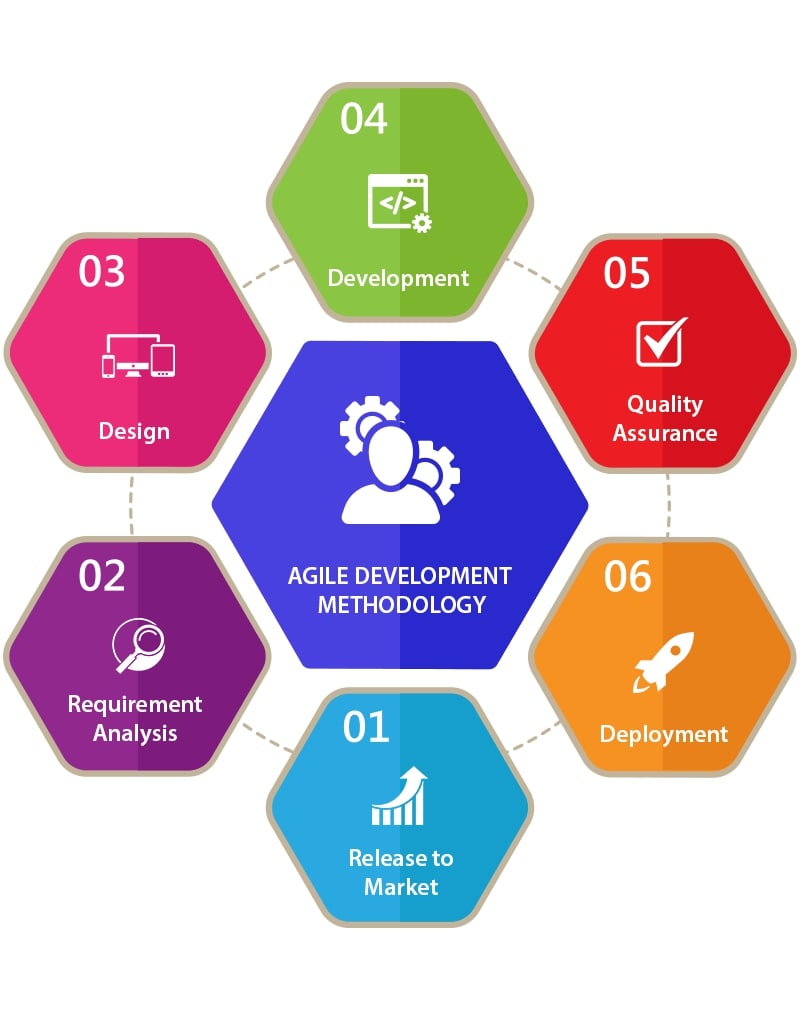
4. Artificial Intelligence and Machine Learning
AI and machine learning technologies are shaping our digital worlds. For this topic, you can discuss the main types of AI technologies. Moreover, highlights the different approaches to machine learning. Collectively, these two technologies use human intelligence for proper reasoning and problem-solving. Also, they are creating powerful impacts on innovation, creativity, and businesses.
Furthermore, you can also explain how AI and ML are transforming our current industries. You can emphasize the usage of AI and ML in healthcare, education, training, and institutes. Also, you can come up with some well-researched predictions of AI to intrigue the audience.

5. Cybersecurity and Networking
Cybersecurity and networking technologies have a great scope in computer science. In this particular topic, discuss the importance of cybersecurity in organizations, companies, and government institutes. You can also highlight the key cybersecurity threats, such as malware. You can also include case studies of breached cybersecurity in tech giant companies.
For networking, you can explain the network components and protocols briefly. Moreover, highlight the connection between strong networking and cybersecurity. You can also guide the audience about reliable measures to ensure cybersecurity.

6. Operating Systems and Computer Architecture
Operating systems are the backbone of processing information in a computer. In this PPT presentation topic for computer science , you can explain the operating systems in detail. You can explain the basic functions of OS, such as process management, user interface, device management, etc. Afterward, you can discuss the major types of OS in a computer. Here, you can also talk about real-time OS and its significance.
Furthermore, you can guide the audience about the basics of computer architecture. First, you need to explain about software and hardware in a clear way. Afterward, you can discuss the roles of the CPU, main memory, registers, cache memory, etc. Moreover, you can also explain how operating systems interact with hardware to process the data.
7. Human-Computer Interaction (HCI)
HCI is a multidisciplinary field and holds great importance. This topic combines the role of computer science, cognitive psychology, and social sciences. Here, you can discuss how human-computer interaction can affect usability for people. You can enlist some of the main benefits of HCI in our modern world. For example, its influence on crafting a user interface that matches people's interests.
Furthermore, you can discuss HCI technologies and current trends—for instance, the usage of HCI in voice interaction, AR, VR, and NLP. To balance your presentation, you can also point out the challenges in HCI, like ethical concerns and data security.
8. Cloud Computing and Distributed Systems
Cloud computing has several advantages in accessing stored information. In your presentation, you can highlight its key features like rapid elasticity and easy network access. Make sure to discuss the major cloud computing models in detail. For example, infrastructure as a service (IaaS), software as a service (SaaS), and platform as a service (PaaS).
Similarly, you can talk about distributed systems and their goals in achieving scalability. Distributed systems also help in data consistency and replication. Moreover, you can also draw comparisons between cloud computing and distributed systems. This will help the audience to differentiate between these two concepts.

9. The Future of Computer Science
The future of computer science will emerge with new trends and innovations. In the future, we can expect AI and ML technologies will get more advanced. Moreover, the use of blockchain technology will be surged. With more advancements, the security threats in decentralization will be reduced. Furthermore, cybersecurity will get more secure and evolve. Hence, data privacy will be prioritized in the future.
Also, the advancements in CS will help in tackling climate change. The role of data analytics and simulations would be able to address global challenges easily. You can also offer more well-researched predictions regarding CS to intrigue the audience.
Part 2. How to Make Your Computer Science Presentation Engaging
Do you want to make your technical topics for presentation in computer science captivating? Here are some valuable tips that can help you in this regard:
- Compelling Hook: To capture the interest of your audience, you should begin with an engaging start. You can ask an intriguing question to the audience to gain their attention. Also, you can use a quotation or real-life incident to seek their attention. Moreover, use interactive quizzes to hook your audience thoroughly.
- Clear Structure and Flow: Your presentation should have a well-structured flow. Along with a proper introduction, you should explain the main body parts effectively. Ensure not to add overwhelming text on PPT slides. To conclude, provide a sensible call to action to motivate the viewers.
- Audience engagement: Engaging the audience is very important in a presentation. To do so, you can add animated characters and content to excite the viewers. Furthermore, add metaphors and analogies to make the content understandable. You can also share your personal experiences and incidents to engage the viewers.
- Data Visualization: Adding visuals is another trick to make a presentation attractive. Thus, ensure the addition of high-quality images and videos in the presentation. They should be relevant and incorporate the main message. Furthermore, you can draw graphs, charts, and tables to display numerical data. It will make your presentation less textual and tedious.
- Effective Delivery: Your communication style during the presentation is extremely significant. To impose a good impression, make eye contact with all your viewers. Moreover, include hand gestures to make the speaking style natural. Make sure to opt for a moderate speaking speed for the audience. Furthermore, try to pronounce words correctly to add a professional touch.
Part 3. Getting Started a Good Computer Science Presentation with Presentory
Are you ready to make flawless computer science presentations? Wondershare Presentory is the most recommended AI tool to craft presentations in the desired manner. It contains basic and advanced tools to tailor to the users’ needs. You can upload PPT slides and custom media files in its clean interface. Moreover, you can replace backgrounds in your presentations without affecting their original quality.
Presentory also helps in adding scenes and text graphics. You can manage the placement of text in your presentation through this tool. Moreover, you can insert the presentation notes on a teleprompter for further assistance. With its “Property” feature, you can manage font, opacity, size, and text color. Thus, you must explore the Presentory to make astonishing computer science presentations.
Main Features
- AI Generation: With the AI feature, you can generate automated presentations on this tool. It only requires the topic for your presentation. Afterward, the tool will prepare slides with relevant content automatically.
- Built-in Templates: Are you a beginner in creating presentations? No worries, as this tool includes many vibrant templates. You don’t need to create your presentation from scratch using the templates. All templates are available for different use cases.
- High-Quality Live Streaming: Live streaming of presentations is now possible with Presentory. This tool lets you live-stream your presentations on all platforms. Moreover, record the presentations in your preferred settings easily.
- Efficient Cloud Services: Presentory provides many cloud services for its users. With this tool, you can get enough file size sharing and storage limits. Moreover, it offers a password authentication feature for data protection.
How to Craft Computer Science Presentations with Presentory
This section will provide complete instructions to generate the best topics for presentation in computer science with Presentory. Thus, continue reading this section:
step1 Select the AI Presentation Option
Begin by launching Presentory on your PC and selecting the “Create with AI” feature. Now, enter the desired computer science presentation topic in the given box. The tool will quickly begin generating the relevant content for you.

step2 Specify the Presentation Content and Themen
If you find the presentation content desirable, click the “Continue” button. Afterward, select a theme style from the given options and press “Continue” to proceed.
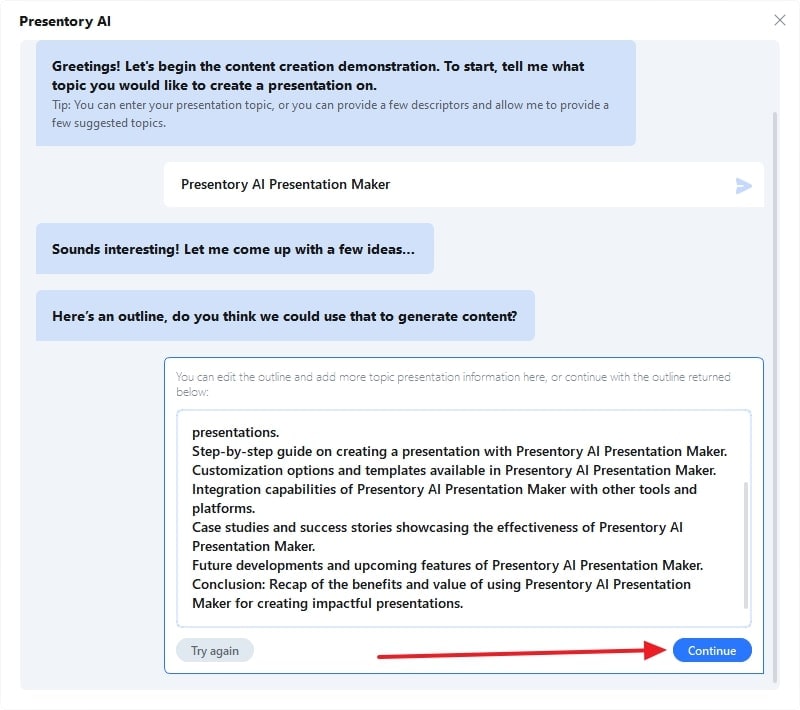
step3 Add Multiple Customizations
After some seconds, the tool will evenly distribute the content on all slides. Now, you can add custom changes of your choice. You can change the font, style, and size of text. Moreover, you can add backgrounds, images, videos, and web stickers. Once done with all the edits, record or livestream the presentation with the customized options.
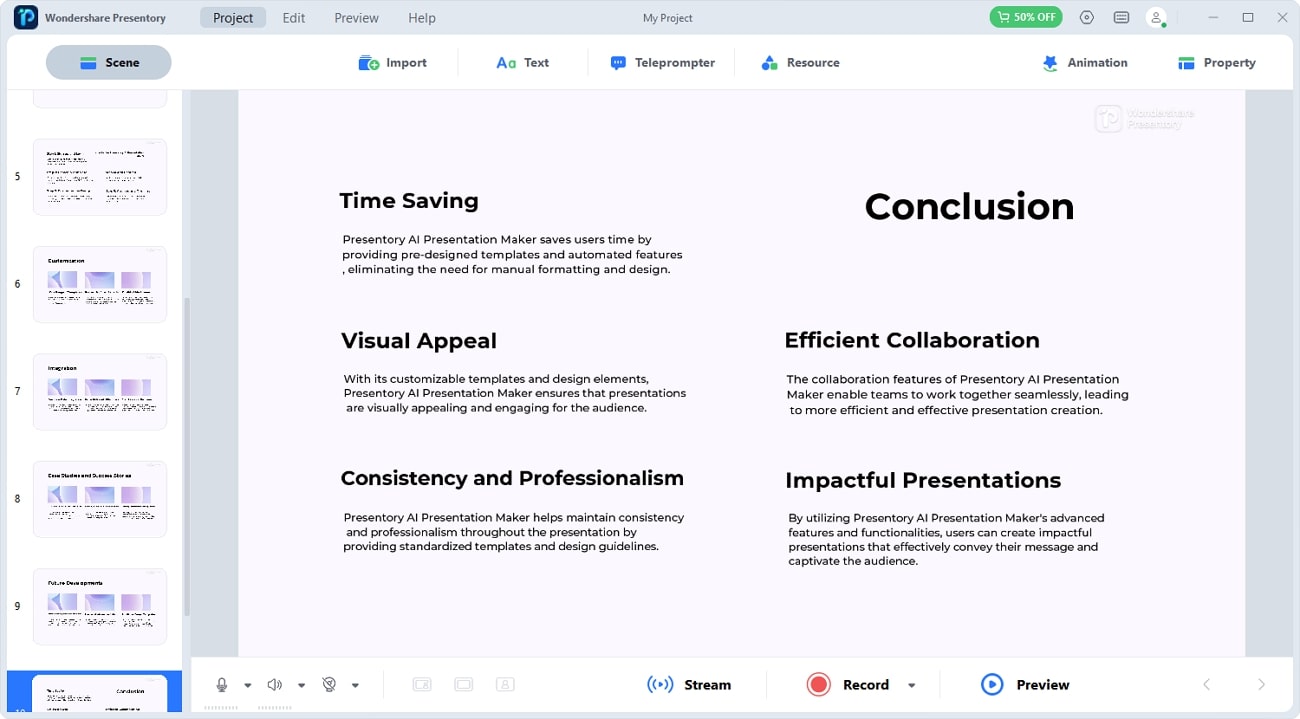
Computer science has a great scope in this digital age. Thus, you should create computer science presentations to educate the audience. By reading this guide, you came across many computer science topics for presentation . For more help, you can use Presentory to create AI-powered presentations in your preferred way. It’s an advanced tool with all the powerful features to generate a compelling presentation.
You May Also Like
- How to Add Slide Transitions in PowerPoint?
Related articles
Open Digital Material
Digital Learning Opens Up New Worlds
Technology Topics for Presentations: Engaging Your Audience with Relevant Ideas
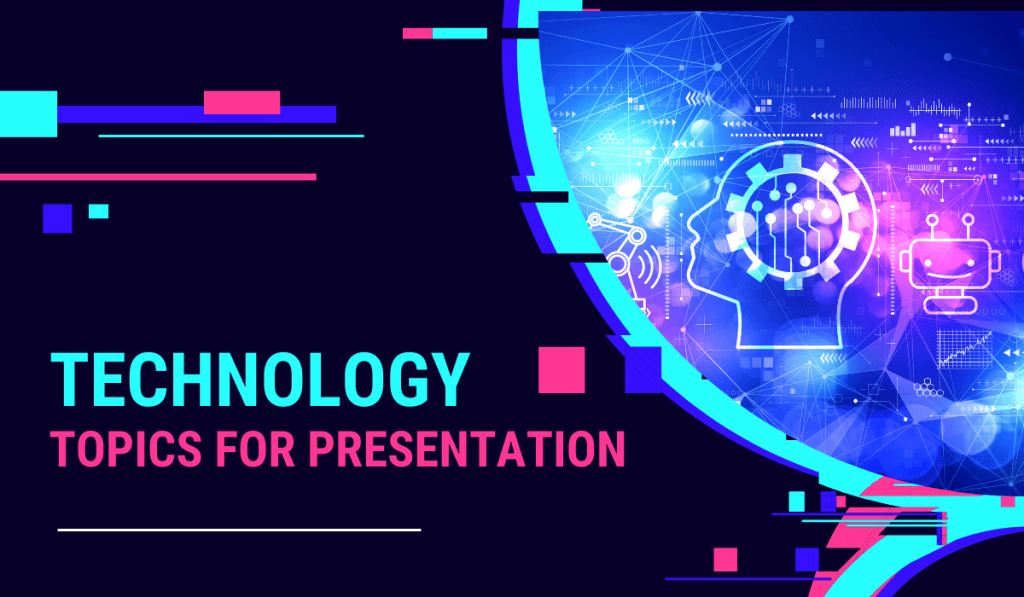
Technology is important in many parts of our life in today’s frantic digital society. The ability to deliver a fascinating and informative presentation on technology-related issues is an important skill whether you are a student, professional, or entrepreneur. This article tries to give you an extensive collection of relevant technology topics for presentations that are guaranteed to attract your audience’s interest.
However, selecting the correct topic for your presentation might be a difficult challenge often. You may fascinate your audience and create a lasting impact by combining these concepts into your presentation.
Table of Contents
Advantages of Choosing Relevant Technology Topics for Presentation
It is critical to assess the importance and urgency of latest technology topics for presentations. You can make your presentation more interesting and instructive by selecting a topic that is relevant to your audience’s interests and tackles current happenings.
Furthermore, technological themes provide several benefits, such as:
- High Interest: Technology is a globally fascinating subject that captivates people from all walks of life. Choosing the latest technical topics for presentation ensures that your audience remains engaged and interested in what you have to offer.
- Practicality: Technology plays an important part in our lives, making it easy to relate to and implement the information presented in your presentation.
- Relevance: In today’s quickly changing technology scene, keeping your audience up to date on the newest trends and advances is critical. Presenting relevant technical topics showcases your competence and establishes you as an experienced person.
Now, let’s dive into some specific technology topics for presentations that are ideal ones, and each of them provides unique insights and engaging possibilities.
Exploring the Importance of Cybersecurity in the Digital Age

Individuals, corporations, and governments are all concerned about cybersecurity in an increasingly linked world. This subject delves into the relevance of preserving digital assets, preserving personal data, and avoiding cyber dangers.
Discussing cybersecurity measures, best practices, and new trends can help individuals appreciate the significance of internet security.
Artificial Intelligence and Machine Learning: Transforming Industries

Artificial intelligence (AI) and machine learning (ML) have transformed industries throughout the world. When you present on this topic, you will be able to dive into the influence of AI and ML on industries such as healthcare, banking, manufacturing, and mobility.
Using real-world examples and addressing the possibilities of these advancements will demonstrate their revolutionary ability.
The Rise of Blockchain Technology and Its Potential Applications

Because of its flexible and trustworthy nature, blockchain technology has grown in popularity. This topic allows you to learn about the principles of blockchain, its uses outside of cryptocurrency, and its potential to transform sectors such as logistics, healthcare records, and property rights.
Big Data: Unveiling Insights for Business Growth

As the volume of data tends to rise dramatically, organizations must extract important insights from it. When you present on big data, you can talk about data analytics, modeling for prediction, and making choices based on data.
Your audience will be interested in learning how firms can use big data to fuel development and acquire a competitive advantage.
The Impact of Virtual and Augmented Reality in Various Fields

From gaming and entertainment to education and healthcare, virtual reality (VR) and augmented reality (AR) are revolutionizing sectors. Studying these technology developments, their applications, and the promise they have for improving user experiences will capture the attention of your audience.
You may illustrate the huge potential of VR and AR by demonstrating how they can transport consumers to diverse virtual settings or overlay digital information over the actual world. VR and AR have enormous promise, from dynamic gaming experiences to virtual training simulations.
Innovations in the Internet of Things (IoT) and Smart Home Technologies

live and making it easy and effective.
The Internet of Things (IoT) has cleared the way for a linked society in which commonplace things can share information and interact with each other. The ability to present on IoT and smart home technologies allows you to dig into improvements in house automation, connected appliances, and intelligent energy management systems.
You can encourage people to accept these technologies by addressing how IoT is revolutionizing the way we live and making it easy and effective.
Automation and Robotics: Enhancing Efficiency and Productivity

Automation and robots have had a huge influence on industries, resulting in simplified procedures and increased efficiency. This topic permits you to investigate the integration of robots in manufacturing, distribution, healthcare, and even everyday life.
Considering the advantages of technology, such as higher efficiency, lower costs, and enhanced safety, will be well received by your audience.
Future of Renewable Energy and Sustainable Technologies

Renewable energy and sustainable technology have gained significance as the worldwide focus on durability has grown. You can address the newest breakthroughs in solar power, wind energy, electric cars, and battery storage options by presenting on this topic. You may motivate your audience to adopt environmentally friendly practices by showing how these technologies lead to a brighter future.
Ethical Implications of Emerging Technologies

As technology advances, ethical concerns become more important. You may engage the viewers in challenging dialogues by presenting the moral complications of developing technologies such as AI, genetic engineering, and privacy problems.
You may inspire your listeners to consider the societal impact of technical breakthroughs by addressing the potential hazards and ethical quandaries linked with these innovations.
Overcoming Challenges in Digital Transformation

Digital transformation is the process through which firms use technology, including reading technology , to improve their operations and interactions with customers. Presenting on this topic allows you to talk about the issues that businesses experience during digital transformation and how to overcome them.
You can inspire your audience to welcome digital advancement in their own personal sectors by sharing insights into successful case studies and emphasizing the need for adaptation and creativity.
How Technology is Revolutionizing Healthcare

Technology has resulted in considerable breakthroughs in the healthcare business. You may investigate how telemedicine, wearable technologies, electronic health records, and AI-powered diagnostics are altering the delivery of healthcare by talking on this topic.
You may highlight the positive influence of technology in healthcare by emphasizing the possible benefits of these technologies, such as greater satisfaction with care, enhanced connectivity, and expense saving.
Gaming Technology: An Ever-Expanding Industry

Gaming technology has advanced quickly, transforming into a multibillion-dollar business spanning consoles, PCs, mobile devices, and VR platforms. You may go into the history of gaming, upcoming trends, and the effect of esports by presenting on this topic. You can captivate the viewers with special perspectives on the gaming industry by highlighting the intersection between technology and enjoyment.
Q1: How do I choose the right technology topics for presentations?
A: Consider your audience’s interests, current trends, and the relevance of the topic to the field or industry you’re addressing. Look for topics that have significant impact and potential for engagement.
Q2: How can I make my technology presentation more interactive?
A: Incorporate multimedia elements, such as videos, demonstrations, or interactive quizzes. Encourage audience participation through Q&A sessions or group discussions.
Q3: Are there any recommended resources for further research on technology topics?
A: Yes, you can explore reputable technology publications, industry reports, academic journals, and technology-focused websites for in-depth research and insights.
Q4: How can I simplify complex technological concepts for a non-technical audience?
A: Use relatable analogies, real-life examples, and visual aids to break down complex concepts into more understandable terms. Focus on the practical applications and benefits of the technology.
Q5: How can I keep my technology presentation engaging throughout?
A: Incorporate storytelling techniques, personal anecdotes, and captivating visuals to maintain the audience’s interest. Use rhetorical questions and thought-provoking statements to encourage active engagement.
So, this article was all about technology topics for presentations that can help to engage the audience. We have covered a broad spectrum of technical advances, from cybersecurity and artificial intelligence to renewable energy and quantum computing. You may produce a powerful presentation that creates an indelible mark by picking a topic that resonates with your audience’s interests and integrating compelling information.
How to Find Affiliate Marketers in 2024: A Complete Guid
Maximize efficiency through outsourcing product development, fincore digital marketing: your key to online visibility and growth, how shareable links in email marketing can boost your campaigns.
- Interactive Presentation
+20 Technology Topics For Presentation | Best Step-By-Step Guide For Beginners in 2024
Jane Ng • 07 April, 2024 • 8 min read
Are you struggling to prepare your technology topic for presentation ? Don't worry! We've got you covered! In this blog post, we provide you with a step-by-step definition guide to craft a well-rounded and informative presentation. Whether you're exploring Artificial Intelligence, Blockchain, or Cybersecurity, this post will equip you with 20 technology topics for presentation to captivate your audience and showcase your expertise.
- Easy topics for presentation
- Marketing presentation
Let's get started with top technology presentation topics!
Table of Contents
#1 - who is your target audience.
- #2 - What Is Your Technology Topic?
#3 - Why Do You Choose This Topic For Presentation?
#4 - when & where will you make your presentation, #5 - how to make your presentation effective , 20 technology topics for presentation , key takeaways.

Start in seconds.
Get free templates for your next interactive presentation. Sign up for free and take what you want from the template library!
Identifying your presentation's target audience is the first step in choosing a technology topic that will resonate with them and meet their needs.
You can define your audience by the following aspects:
Demographics
Consider the demographics of your audience, such as age, gender, education, and professional background. Different demographics may have different levels of familiarity and interest in technology.
- For example, an audience of tech-savvy professionals may require an advanced or specialized topic, while a general audience with diverse backgrounds may benefit from a broader subject matter.
Take into account your audience's interests and areas of focus.
- Are they primarily interested in the business applications of the technology?
- Are they more concerned with the social or ethical implications?
Understanding their interests will help you tailor your topic to capture their attention and engage them throughout your presentation.

Technical knowledge
Evaluate the level of technical knowledge your audience possesses by answering these questions:
- Are they beginners with a limited understanding of the technology, or are they experts in the field?
Then you can adjust the complexity and depth of your subject accordingly. Make sure that the presentation strikes the right balance between being easy to understand to people with limited technical backgrounds while providing value for those with more advanced knowledge.
Specific needs
Consider the specific needs and challenges of your audience.
- Can the problems they are facing be solved by technology?
- Can you offer solutions, strategies, or real-world examples that work for their situation?
Tailoring your theme to meet their needs will improve the relevance and applicability of your presentation.
By carefully considering your audience's demographics, interests, and technical savvy, you can choose a technology topic that aligns with their interests and captures their curiosity.
#2 - What Is Your Tech Presentation Ideas?
Defining technology topics for presentation involves clarifying its scope, purpose, and key aspects. You can effectively define your tech topics for presentation in the following steps:
- Start by conducting preliminary research on broad technology topics that interest you.
- Explore technology trends and industry news to identify potential topics that align with your presentation goals.
- Once you have a broad idea, narrow the focus of your topic to specific sub-topics, applications, or challenges in the technology sector that you find interesting or relevant.
- Consider the resources available, such as research materials, case studies, or expert interviews.
- Consider the time constraints of your presentation and determine the appropriate scope and depth for your topic. Ensure that the content can be adequately covered within the allocated time.
By following these steps, you can effectively define a technology theme for your presentation.

Understanding why you chose particular technology-related topics is essential as it helps define the purpose and goals of your presentation. Here are some common:
Educational purpose
If your objective is to educate your audience, explain why you chose this topic.
- Is it because the technology is new, and you want to provide an overview?
- Are you aiming to share technology-related insights, knowledge, or best practices?
Communicate the educational value your chosen topic brings to your audience.
Purpose of persuasion
If your goal is to convince your audience, explain why you believe the topic is important and deserves their attention.
- Highlight the potential impact or benefit that technology can have.
- Present compelling evidence, case studies, or examples that support your argument.
Emphasize why your audience should be interested in this topic and how it can positively affect their lives, work, or industry.
Inspirational purpose
If you aim to inspire your audience, explain what makes this tech theme so inspiring or innovative.
- Share stories of successful implementations or groundbreaking progress.
- Discuss the transformative power of technology and how it has the potential to change lives, industries, or society as a whole.
Inspire your audience by showcasing the possibilities and encouraging them to embrace the potential of technology.
Awareness purpose
If your goal is to create awareness, explain why this topic deserves attention and recognition.
- Discuss any social, environmental, or ethical impacts associated with the technology.
- Highlight challenges or risks that need to be addressed.
Raise awareness of the importance of understanding and interacting with the subject for the betterment of individuals, organizations, or the world at large.
When you clearly define the purpose and objectives of your presentation, you provide a guiding framework for structuring your content, selecting supporting examples or data, and tailoring your delivery to achieve the desired impact on your audience.

By considering the "When" and "Where" aspects of your presentation, you can effectively plan and prepare for the logistics and environment for your presentation. This ensures that you are equipped with the necessary resources to deliver a successful and engaging presentation experience.
Here are some pointers you need to check about time and location when preparing a presentation:
- Timing: Determine the date and time of your presentation. Take into account any deadlines, event schedules, or specific timeframes that may impact the availability or attention of your target audience.
- Location: Identify the venue or platform where you deliver your presentation. Will it be an in-person event at a physical location or an online presentation through a video conferencing platform or webinar?
- Setting and Environment: If it is an in-person presentation, evaluate the seating arrangement, stage setup, audio-visual equipment, etc. If it is an online presentation, ensure that you have a quiet and well-lit space with a stable internet connection.
- Technical Considerations: Pay attention to any technical considerations associated with your presentation. Make sure you have access to the necessary technology, equipment, and technical support.
Choosing technology topics for presentation effectively requires the right approach, and AhaSlides can be a valuable tool to enhance the process. By following these steps, you can effectively select technology topics for your presentation:
- Understand your audience: Take into account the interests, needs, and background of your audience. Analyze their level of technical knowledge to identify topics that will resonate with them. Utilize AhaSlides' live polls to gather audience feedback and tailor your topic accordingly.
- Research current trends and emerging technologies: Stay up-to-date with the latest technology trends and advancements. Interactive quizzes and trivia sessions can be used to engage your audience and share knowledge about these trends.
- Evaluate impact and relevance: Consider practical applications, benefits, and challenges associated with each topic. You can use spinner wheel , word cloud , idea board and Q&A to gather audience opinions and perspectives on different technology topics.
- Balance complexity and simplicity: Choose technology topics that balance between being informative and understandable for your audience. AhaSlides allows you to create visually appealing slides and rating scale , prdinal scale to simplify complex concepts and enhance audience comprehension.
🎉 Check out: 21+ Icebreaker Games for Better Team Meeting Engagement | Updated in 2024
Here are some popular and interesting IT presentation topics for a presentation that you can consider:
- Artificial Intelligence in Healthcare: Applications, benefits, and Challenges.
- Internet of Things (IoT) and Smart Homes: Enhancing convenience and efficiency.
- Cybersecurity: Protecting digital assets and safeguarding personal information.
- Blockchain Technology: Revolutionizing industries
- Augmented Reality (AR) in Education: Transforming learning experiences.
- The Impact of 5G Technology: Faster Connections and new possibilities.
- Cloud Computing: Advantages, deployment models, and use cases.
- Biometric Authentication: Ensuring secure and convenient access control.
- Robotics and Automation in Manufacturing: Improving productivity and efficiency.
- Sustainable Energy Technologies: Advancements in renewable energy sources.
- Data Science and Predictive Analytics: Extracting insights for informed decision-making.
- Virtual Reality (VR) in Training and Simulation: Enhancing Learning and skills development.
- The Internet of Medical Things (IoMT): Innovations in healthcare technology.
- Quantum Computing: Unlocking new levels of computational power.
- E-commerce and Digital Payments: Trends, challenges, and prospects.
- Autonomous Vehicles: Advancements and implications for transportation.
- Natural Language Processing (NLP): Applications in chatbots and voice assistants.
- 3D Printing: Revolutionizing manufacturing and prototyping processes.
- Big Data and Business Intelligence: Leveraging data for strategic decision-making.
- Edge Computing: Powering real-time applications and reducing latency.
Check out: 2024 Updated | Online Quiz Makers | Top 5 Free Options to Energise your Crowd
By following the step-by-step guide we've provided for choosing technology topics for presentation, you're on your way to delivering a successful presentation that resonates with your audience.
And don't forget to utilize AhaSlides' templates and interactive features to make your presentations captivating, intuitive, and engaging for your audience.

A writer who wants to create practical and valuable content for the audience
Tips to Engage with Polls & Trivia
More from AhaSlides


COMMENTS
Embrace the dynamic nature of technology and embark on a journey of exploration and enlightenment through engaging computer presentations. Learn 151+ computer presentation topics for maximum impact. Customize content based on audience for engaging presentations.
In this comprehensive guide, we've curated over 100 technology topics for presentations, categorized into various fields to help you find the perfect topic that suits your audience and presentation goals.
This is a list of computer science Presentation Topics for students and professionals. These updated topics can be used for PowerPoint Paper presentation, Poster Presentation, classroom ppt presentation, seminars, seminars, webinars and conferences. etc.
Through this article, you can discover many computer science topics for presentation. With such topics, you can raise awareness about the powerful abilities of CS. Hence, read this article carefully to choose the best computer science PPT topic. Various Computer Science Topics for Presentation 2023.
This article tries to give you an extensive collection of relevant technology topics for presentations that are guaranteed to attract your audience’s interest. However, selecting the correct topic for your presentation might be a difficult challenge often.
20 Technology Topics For Presentation. Here are some popular and interesting IT presentation topics for a presentation that you can consider: Artificial Intelligence in Healthcare: Applications, benefits, and Challenges. Internet of Things (IoT) and Smart Homes: Enhancing convenience and efficiency.